Virtualization software is widely popular due to its application scenarios and advantages, allowing users to experiment, test, or run software that requires specific operating system versions.
This technology helps users create resources such as virtual machines (VMs), virtual networks, and virtual storage by providing an abstraction layer over computer hardware. Its core advantages include environment isolation, security protection, and unlimited testing freedom.
Existing virtualization software mainly targets three types of users: desktop users, server administrators, and enterprise users.
The following lists various virtualization software along with their target user groups.
1. VirtualBox
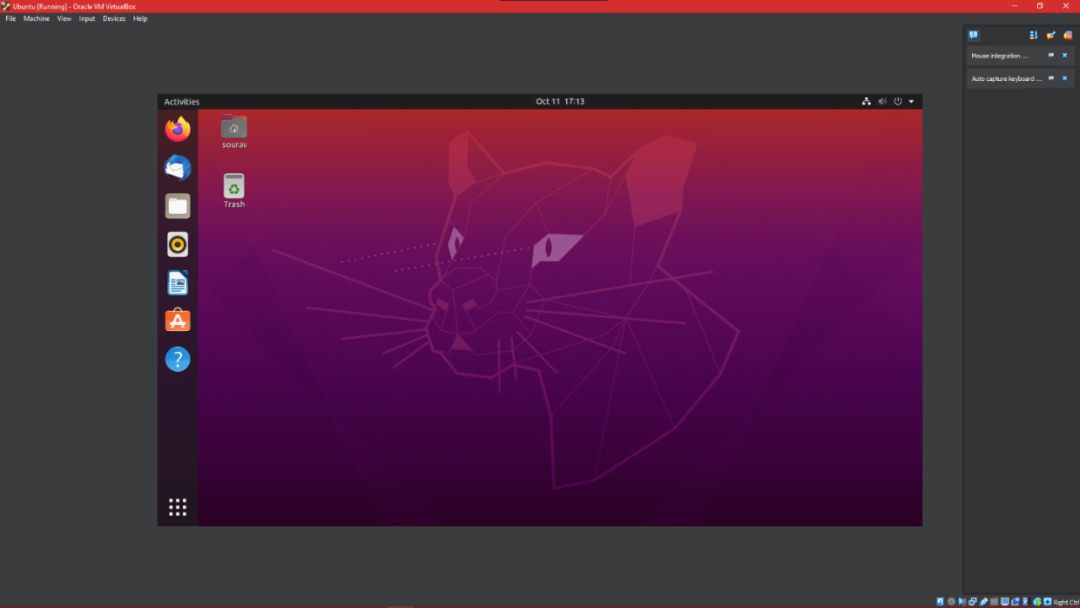
VirtualBox is a top-tier open-source virtualization software suitable for Linux, Windows, and macOS.
It is suitable for all types of users: whether a casual user wanting to run Linux in a VM, a professional needing to create a testing environment, or an enterprise user seeking virtualization solutions.
It can be seen as a one-stop solution that meets most needs. Although primarily aimed at desktop users, by consulting the official documentation, users can enable headless mode to deploy the VM as a remote desktop server.
Core advantages:
- Supports multiple guest operating systems
- Simple and intuitive UI with efficient performance
- Continuously receives version updates
- Comprehensive and rich features
2. OpenVZ

Need to create isolated Linux containers on a server? OpenVZ would be an ideal choice.
It allows you to create containers that behave like independent servers, which are fully functional and easy to manage.
Since OpenVZ is built and distributed based on Linux, its containers only support running on Linux systems.
For new users just getting into container technology, OpenVZ is an excellent choice—configuration and management are simple and intuitive. Additionally, compared to other solutions, VPS hosting based on OpenVZ is more cost-effective.
Core advantages:
- High resource utilization
- Easy operation and management
3. KVM
Kernel-based Virtual Machine (KVM) is a native component of Linux, which is its greatest advantage, allowing users to run VMs out of the box on Linux systems. It belongs to a class of hardware virtualization (Type-1) hypervisors.
KVM transforms the Linux host system into a hypervisor, allowing VMs to achieve near bare-metal performance.
Unlike OpenVZ, KVM is deeply integrated into the Linux system and does not require separate installation, offering high customizability. However, it requires a hypervisor for hardware-level virtualization, resulting in relatively high memory and system resource usage.
KVM can create VMs/clients of various operating systems. Specific configuration methods can be referenced in the KVM installation guide on the official Ubuntu blog.
Core features:
- Highly customizable but complex to configure
- Native integration into the Linux system
Note: A hypervisor refers to the software used to create and run virtual machines.
4. GNOME Boxes
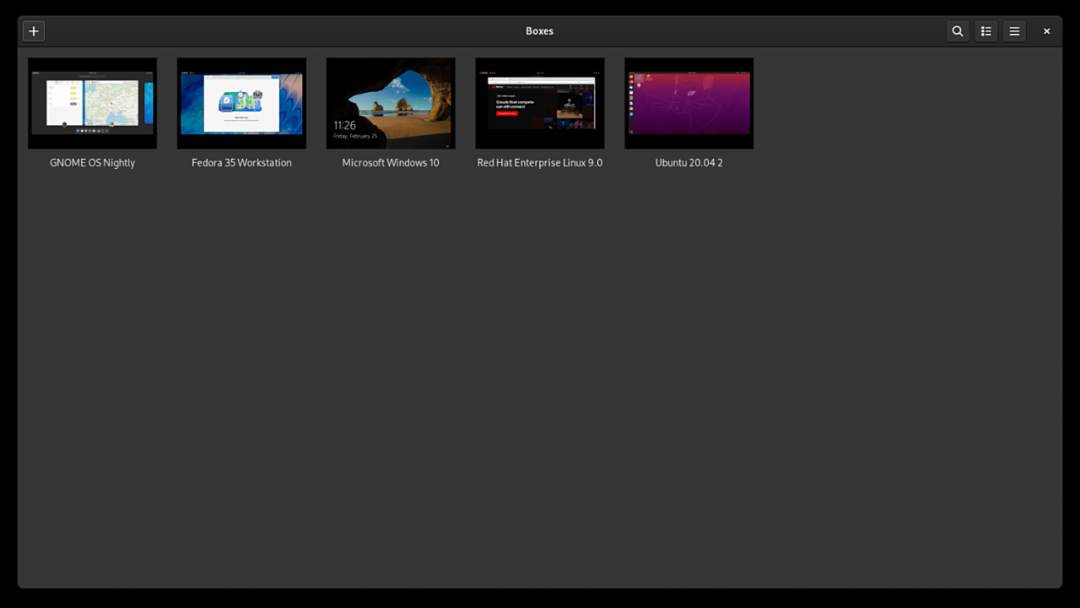
Core advantages:
- Modern user experience
- Simple and easy to use
GNOME Boxes is the most simplified virtualization solution for users who want to quickly download and test Linux distributions.
Compared to other solutions, GNOME Boxes may not have all the advanced features, but it provides the core basic functionalities. Its user experience is straightforward, making it particularly suitable for beginners.
5. VMware Workstation
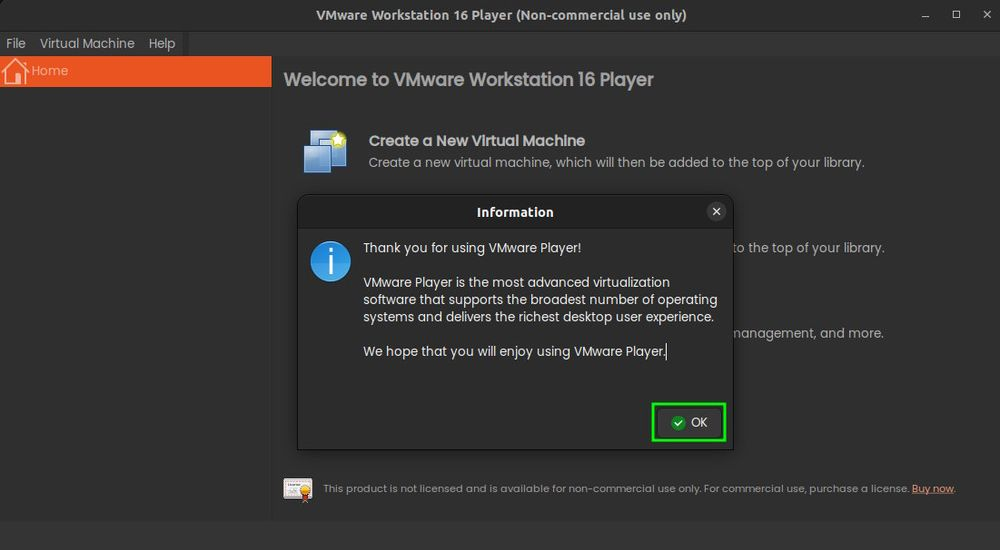
Core advantages:
- Offers both personal and enterprise server versions
- Easy to operate
- Advanced versions have richer features
VMware is a widely popular virtualization software that supports Linux, Windows, and macOS platforms.
As a commercial closed-source solution, VMware holds a leading position in both the personal user and enterprise markets. The company also offers various other products related to cloud computing.
If you need a desktop virtualization solution, VMware Workstation Player would be a good choice; for server and cloud service providers, VMware offers several dedicated versions.
6. Xen
Core features:
- Designed for server infrastructure
- Supports paravirtualization technology (most other solutions do not have this feature)
Xen is one of the earliest virtualization software adopted by Amazon and Red Hat. Although most users have now shifted from Xen to KVM, it remains an optional solution for cloud infrastructure.
It is important to note that Xen focuses more on server virtualization rather than desktop virtualization. The software supports Linux, Windows, and FreeBSD systems.
7. oVirt
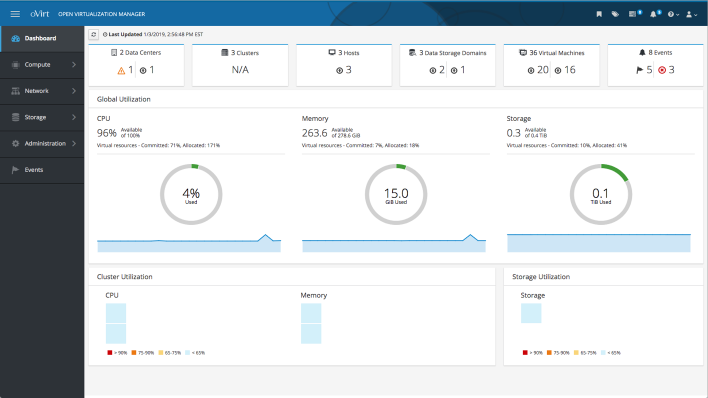
oVirt: A KVM virtualization management platform for enterprise applications
Core advantages:
- Enterprise-level solution
- Based on KVM virtualization architecture
- Supports distributed virtualization deployment
- Requires a professional technical background
oVirt is an excellent open-source virtualization management tool designed for enterprises and community users that need to manage server architectures. The platform provides a rich web-based management interface to manage hosts, storage, and network configurations uniformly, and supports real-time migration of virtual machines.
It is important to note that oVirt only supports Red Hat Enterprise Linux (RHEL) and CentOS Linux systems and is currently not compatible with Windows platforms.
8. Proxmox
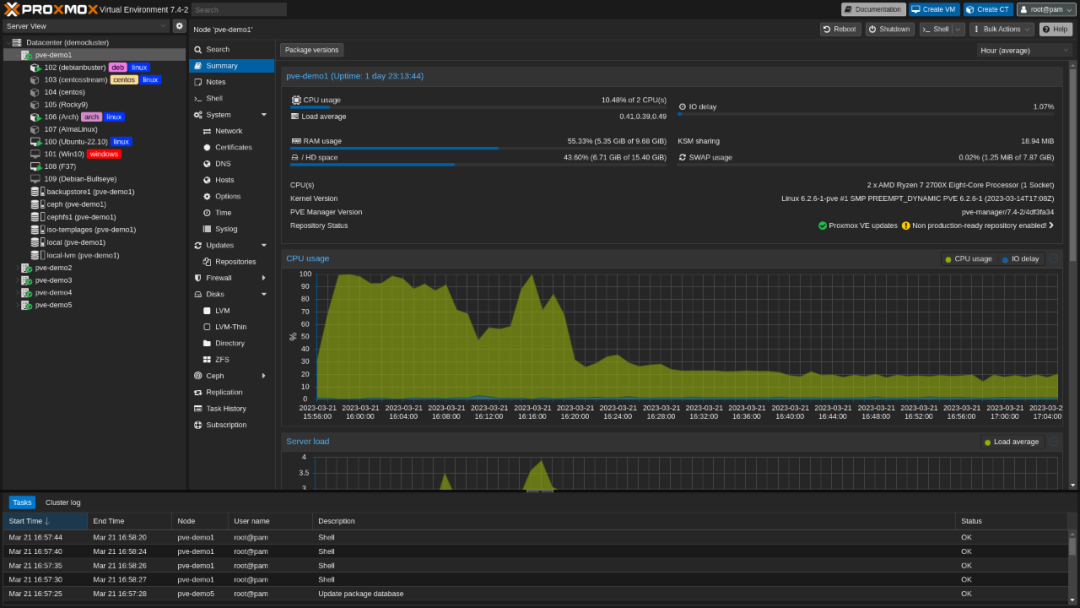
Proxmox: An open-source virtualization platform designed for enterprises
Core advantages:
- Easy deployment
- Comprehensive documentation
Proxmox is another open-source virtualization platform solution aimed at enterprise users. Users need to subscribe to services to receive software updates and technical support, and enterprises can choose corresponding service packages based on actual needs. In addition to the virtualization platform, this solution also provides backup and email security as part of the enterprise infrastructure solutions.
9. QEMU
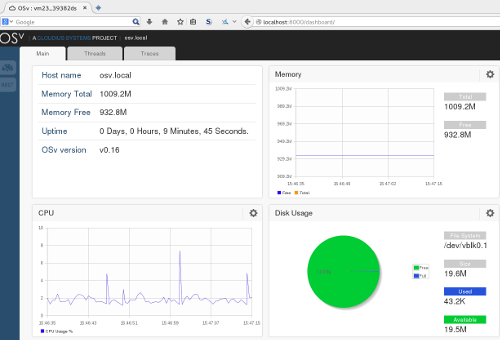
QEMU: A cross-platform virtual machine and emulator solution
Core advantages:
- Supports multiple operating systems
- Hardware-independent flexible virtualization solution
QEMU is an excellent cross-platform virtual machine program (also has emulator functionality). This tool supports various hardware architectures and guest operating systems, and users can combine it with KVM for better performance—KVM serves as a hardware-level virtualization tool, complementing the software-level virtualization of QEMU.
From a technical architecture perspective, QEMU belongs to Type-2 hypervisors (host machine virtualization). If you need a virtual machine management tool based on QEMU that is easy for beginners to operate, it is recommended to try Quickgui.
With these tools, virtualization becomes very easy.
Virtualization is a concept that began to gain popularity a decade ago, and now almost everyone familiar with computers knows about it.
It makes programs easy to use and provides functionalities that simplify things for professionals and home users alike. In most cases, solutions like VirtualBox, GNOME Boxes, and VMware should be the choices for new users.
For enterprises and technical personnel, the choice of virtualization software needs to comprehensively consider application scenarios, technology stack, and resource conditions.
- Enterprise-level server virtualization should prioritize solutions like KVM, oVirt, or VMware that support high availability and cluster management;
- Development testing environments are suitable for lightweight tools like VirtualBox or GNOME Boxes;
- Cloud infrastructure deployment recommends high-performance solutions like KVM or Xen;
- Container isolation scenarios can choose OpenVZ or LXD.
In terms of technical capabilities, beginners can start with graphical tools (like VirtualBox), while Linux operations personnel are more suited for the natively integrated KVM. Key decisions need to balance performance requirements (Type-1/Type-2 architecture), licensing models (open-source/commercial), and ecosystem compatibility (such as Windows/Linux environments), while avoiding excessive pursuit of feature redundancy or sticking to outdated technologies. Actual selection should be validated through PoC to verify the adaptability of core scenarios.
